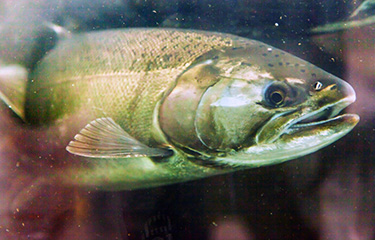Washington state releases 2023 salmon return estimates

The U.S. state of Washington released preliminary estimates for salmon returns to its waters in 2023, with many chinook and coho runs expected to be better than 2022 in Puget Sound, the Columbia River, and Washington’s coastal areas.
Coho returns to Puget Sound and surrounding rivers are forecast to be up in 2023 to around 760,000 wild and hatchery coho, above the 10-year average and above the 2022 result of 666,648 returning coho, according to the Washington Department of Fish and Wildlife. The forecast for Puget Sound chinook calls for the return of around 259,000 fish in 2023, compared to 250,440 in 2022. The return of hatchery chinook is expected to add around 10,000 fish to the total.
The forecasts are based on the latest scientific modeling and a variety of data including environmental indicators such as ocean conditions, numbers of juvenile salmon that migrated to marine waters, and numbers of adult salmon that returned in past years. WDFW Intergovernmental Salmon Manager Kyle Adicks said higher year-over-year estimates are being welcomed by conservationists, anglers, and Indigenous groups, but said the state’s salmon fisheries are still facing difficulties.
“The outlook for Puget Sound Chinook is pretty similar to last year, meaning that we are still far from here we’d like to be in terms of recovery,” Adicks said.
In 2022, WDFW and tribal co-managers submitted a 10-year Puget Sound Chinook Harvest Management Plan to provide long-term Endangered Species Act coverage for Puget Sound fisheries. In March 2023, NOAA said the submitted plan was sufficient to move forward with formal review.
Separately, the odd-numbered year signifies a return of pink salmon to Puget Sound in 2023, with this year’s estimate of 3.95 million fish topping the total of 3.77 million pinks that returned in 2021.
Returns are expected to be up relative to last year’s forecasts for most Puget Sound rivers, with the notable exception of the Skagit River in North Puget Sound, where this year’s forecast is down considerably from 2022 and will require more restrictive fishery measures to meet conservation objectives, Adicks said.
In the Upper Columbia River, around 84,800 summer chinook are forecasted to return in 2023, representing about 120 percent of the 10-year average return and up from 2022’s 78,500 fish. The Columbia River’s upper river fall chinook run should see about 272,400 fish return, an increase from the 254,880 that returned in 2022, while lower-river hatchery chinook, or “tules,” should number 136,100 fish, below last year’s record return of 258,300 fish but still at 149 percent of the 10-year average. The rivers overall chinook returns are expected to be on par with recent three-year returns.
“We’re considering several options to improve the predictability of fall chinook fisheries and limit the in-season closures we've seen in the past several years,” WDFW Columbia River Fisheries Manager Ryan Lothrop said. “We’ll be leaning heavily on public input to help determine what anglers would like to see in 2023.”
Forecasts for Columbia River coho prior to fisheries occurring for the ocean and Columbia River are expected reach just over 886,000 coho in 2023, nearly double the 10-year average and an increase from the 2022 abundance of 685,000 coho. according to WDFW. And 234,500 sockeye are predicted to return to the Columbia in 2023, well below the actual return of nearly 665,000 fish. The endangered Snake River sockeye run is forecast to increase slightly to 2,600, compared to the 2022 return of 2,329 fish, according to WDFW.
Washington coast coho returns should surpass 519,000, up from the forecast of 454,693 fish a year ago. Coho returning to Willapa Bay and Grays Harbor are expected to be up overall this year, while the number of natural-origin Grays Harbor coho is expected to be very similar to 2022 returns, according to WDFW.
Washington state, tribal, and federal fishery managers are currently with the Pacific Fishery Management Council (PFMC) through 10 March to develop options for the year's commercial and recreational ocean chinook and coho salmon fisheries.
Photo courtesy of Bill Perry/Shutterstock






Share